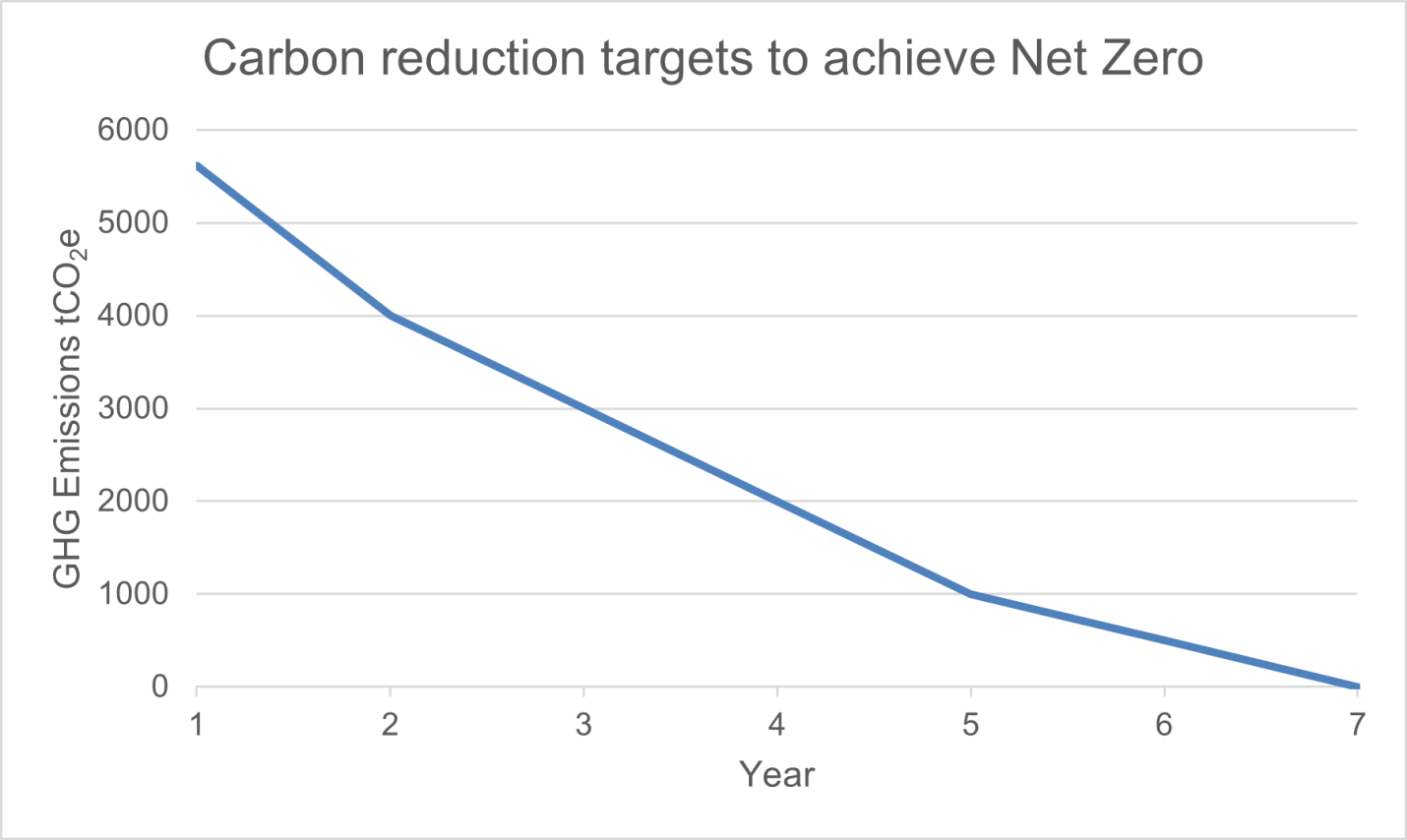Having established the FRS’s Baseline Carbon Footprint, the next step is to aim to reduce emissions in line with the UK Government’s target of achieving Net Zero emissions of greenhouse gasses by 2050.
In an effort to meet this ambitious target CDDFRS is aiming to reduce greenhouse gas emissions to 53% of existing levels between the baseline year and 2033 and to 18% of current levels by 2043, please see figure 5 below.
Figure 5
CDDFRS are signatories to both the “Emergency Services Environment and Sustainability Group Charter” and the County Durham Environment and Climate Change Partnership’s “Climate Change Agreement”.
CDDFRS therefore intends to align its carbon reduction measures with those set out in the National Fire Chief Council’s Environment Sustainability and Climate Change Toolkit and Durham County Council’s Climate Change Strategy and Emergency Response Plans which include measures such as:
- Decarbonising the heating used in buildings by for example exploring the use of Air Source and Ground Source Heat Pumps.
- Continuing to improve the environmental performance of buildings by applying the Building Research Establishment’s Environmental Assessment Methods (BREEAM) to new builds and refurbishments.
- Continued evaluation and implementation of the use of zero and or ultra-low emission fleet vehicles.
- Continue to reduce the impact of staff commuting through measures such as assisted cycle purchase schemes and hybrid working.
- Increased use of renewable and low carbon energy sources such as solar power.
- Working with colleagues in the Environment Agency to assess and manage the environmental impact of fires and other emergencies.
- Promoting the ‘Circular Economy’ by continuing to assess and where possible reduce the environmental impact of the goods and services procured using the Local Government Association’s Sustainable Procurement Toolkit and the Cabinet Office’s Procurement Policy Note (PPN) 06/21.
- Continue to implement measures to reduce the amount of water used and waste produced.
- Undertake Sustainability Impact Assessments for projects that fall within the scope of the Service’s Project Assurance Framework.
The targets for each of these areas will be set out in the CDDFRS Environment Sustainability and Climate Change Plans.

